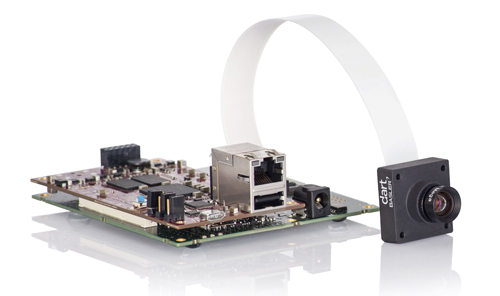Arndt Bake, chief marketing officer of Basler, looks back at the history of machine vision to see what lessons can be applied to the emerging embedded vision market
There is always an ideal time window for successful entry into a market. For embedded vision, this window of opportunity is now. What are the right questions an embedded vision start-up should ask itself and why is now the right time to found a successful embedded vision company?
Many things can be learned by looking at the past. Past developments in the machine vision world reveal insights into future developments in the embedded vision world.
Every market goes through several phases. In some markets, these phases are so slow that we are not even aware of them; in others they move faster. Looking back at developments in the machine vision world, the classic market phases can be clearly identified: the emerging phase from around 1985 to 2000, in which the market structures were established; the growth phase from around 2000 to 2015, in which market shares were distributed; and the current mature phase, in which the market is beginning to consolidate.
In the founding phase there were many machine vision start-ups that used PCs and analogue cameras. Each company was focused on solving specific customer problems; the market was characterised by many individual solutions. The integrators were the most important suppliers during this time.
Only those who secure a firm position in the market in this phase have a long-term chance of success.
During the growth phase, this picture shifts. Some integrators specialise and become solution or component providers. This change gives these companies a scalable business model and lays the foundation for their growth. Many companies grow during this market phase, but some grow faster than others. Companies that find their role, recognising trends early on and aligning their products accordingly, gain market share through product differentiation and better customer orientation.
In the consolidation phase, on the other hand, which is the current state of the machine vision market, the focus is less on product differentiation and more on price pressure. The technology is optimised, and the products from different suppliers differ less and less. The customers prefer large, reliable companies that offer their products at low prices.
A few large companies dominate the market and begin to buy smaller companies in order to secure even broader market access. This is the decisive criterion for success in this phase.
What does all this mean for embedded vision start-ups? The embedded vision market only began to develop about eight years ago and is expected to be in the emerging phase for another four years. Looking back on the development history of the machine vision sector, this means that the time to secure a place in the market is now. Currently there are already many start-ups using embedded processors and camera modules; there are many individual solutions for different customer problems.

Basler suppliers its Dart camera module for embedded vision applications
So the question is: what are the customer problems, and how can embedded vision help solve these problems? If you have answers to these two questions, you may have a start-up idea on your hands.
And then what happens? You could use the idea and build products and a company around this specific customer problem. Combine the software solution with hardware and a cloud connection. Stay focused! Dare to say no every now and then. And as soon as you have a successful model, go global.
We wish you every success with your project.


